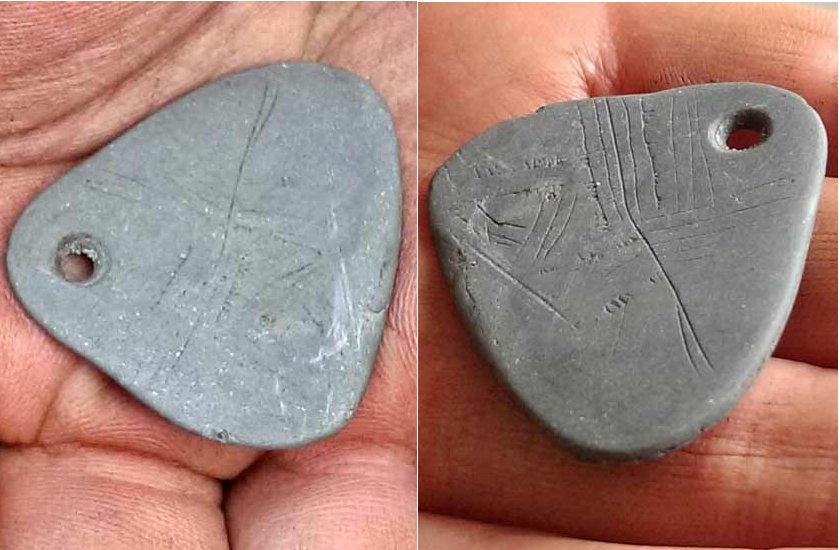11,000-Year-Old Pendant Is Earliest Known Mesolithic Art In Britain
MessageToEagle.com – During excavations at the Early Mesolithic site at Star Carr in North Yorkshire, an 11,000 year old engraved, small fragile pendant was discovered by a research team from the Universities of York, Manchester and Chester.
Crafted from a single piece of shale, the subtriangular three-millimeter thick artifact measuring 31mm by 35mm contains a series of lines, which archaeologists believe may represent a tree, a map, a leaf or even tally marks.

The artifact is the earliest known Mesolithic art in Britain, archaeologists say.
Engraved motifs on Mesolithic pendants are extremely rare and no other engraved pendants made of shale are known in Europe.
See also:
Lost World Of Doggerland: Parts Of Britain’s Sunken Stone Age Atlantis Discovered
“It was incredibly exciting to discover such a rare object. It is unlike anything we have found in Britain from this period. We can only imagine who owned it, how they wore it and what the engravings actually meant to them,” Professor Nicky Milner, of the Department of Archaeology at York, who led the research, said.
“One possibility is that the pendant belonged to a shaman — headdresses made out of red deer antlers found nearby in earlier excavations are thought to have been worn by shamans. We can only guess what the engravings mean but engraved amber pendants found in Denmark have been interpreted as amulets used for spiritual personal protection.”
“This exciting find tells us about the art of the first permanent settlers of Britain after the last Ice Age. This was a time when sea-level was much lower than today. Groups roamed across Doggerland (land now under the North Sea) and into Britain,” Dr Chantal Conneller, from The University of Manchester and co-director of the excavations, said.
“The designs on our pendant are similar to those found in southern Scandinavia and other areas bordering the North Sea, showing a close cultural connection between northern European groups at this time.”
The research is published in Internet Archaeology http://dx.doi.org/10.11141/ia.40.8. The pendant is to be showcased to the public for the first time in a display at the Yorkshire Museum in York starting from February 27 till May 5.
MessageToEagle.com
source: University of York










